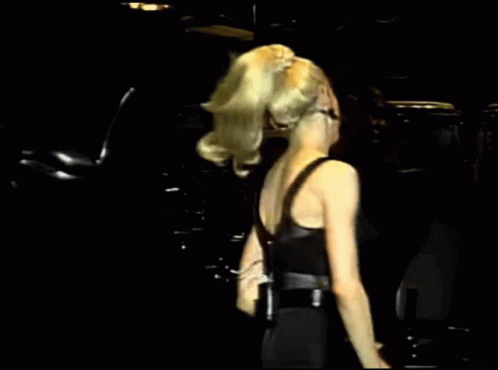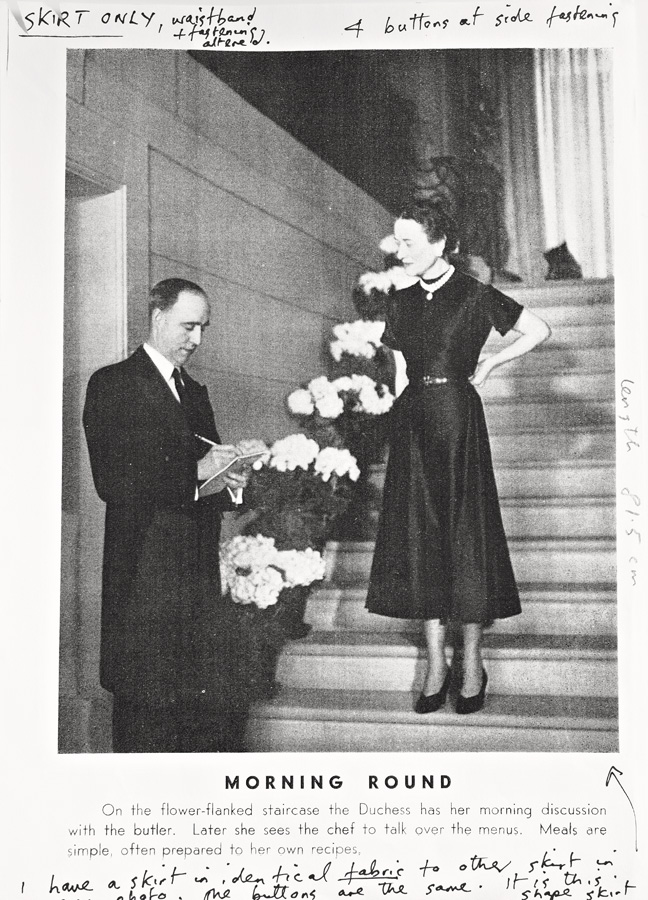Iconic. A cultural mainstay. Capable of reinvention. The Little Black Dress (LBD) has a lot in common with the Queen of Pop. As Madonna embarks on a world tour, Laura Doherty – Communications Officer and Madonna super fan – looks at her 40-year career through the lens of some of her most memorable black outfits. Don’t just stand there, let’s get to it – let’s take a walk through the sartorial career of the ultimate Material Girl…
The exhibition
There’s a major fashion exhibition at the National Museum of Scotland which explores the enduring appeal of the ‘LBD’ across a century of fashion. Beyond the Little Black Dress demonstrates how a seemingly simple garment can be used to express a multitude of identities.
Across 65 looks, the exhibition explores the power of the colour black and how it can convey a range of meanings – from piety to perversion and respect to rebellion. Whilst working on the campaign for the exhibition, it occurred to me that many of the sections could easily feature looks worn by Madonna, the Queen of Reinvention.


“Dance and sing, get up and do your thing”
When Madonna first appeared on TV screens in 1983, her edgy style composed of black Lycra, lace gloves, stacked bracelets and messy blonde hair quickly made her a style icon for young admirers. She had begun her career in New York nightclubs, and her achievable punky aesthetic reflected the cutting edge of the underground scene, offering a refreshing contrast to the mainstream.
It was around this time that she crossed paths with Jonny Slut, whose black kilted outfit (designed by Theresa Coburn) features in the Subcultural Black section of the exhibition. According to his account, she tried to convince a squat full of London creatives to attend her first appearance on Top of the Pops in 1984. Whilst his style leant more towards the Gothic, Madonna’s look was heavily borrowed from New York’s dance and club cultures.
“Come on, girls. Do you believe in love?”

By the time of the American Music Awards in 1985, she had perfected a polished version of this look in a design provided by Jean Paul Gaultier. The red carpet version of the Madonna ‘uniform’ maintained the core ingredients of her style with the very important introduction of a conical bra, which would later reappear as part of the costumes in her 1990 Blonde Ambition tour.

In her opening song ‘Express Yourself’ she wore the (i)conic undergarment with a black suit, challenging gender norms through tailoring whilst performing the ultimate anthem of female self-empowerment. This look echoes the Yves Saint Laurent Le Smoking tuxedo on display in the exhibition. This women’s suit was revolutionary when it was first introduced in 1966 due to its subversion of traditional notions of masculinity and femininity. Madonna and her backing singers (Donna DeLory and Niki Haris) embodied this very spirit as they physically dominated the male dancers onstage during the performance. Ladies: don’t go for second best – put your tailor to the test.

“My name is Dita”
Blonde Ambition was a radical show – its references to sex and sexuality caused controversy which followed the tour around the globe. The set and costume design were imbued with Catholic imagery, including some traditionally modest black priests’ cassocks presented in a provocative sensual context.
Undeterred by threats of arrest, and even a boycott led by the Pope, Madonna continued to push the boundaries of sexual imagery into her infamous coffee book table Sex (1992) and her album Erotica released in the same year. She continued to celebrate queer love and fight stigma at a time when the AIDS epidemic was devastating the LGBTQ+ community. It was in this era when touring The Girlie Show that she adopted bondage-inspired attire – not unlike the garments by Christopher Kane and Sinead O’Dwyer displayed in Subversive Black – exploring female sexual empowerment through a fetishistic aesthetic.

“I’m not sorry (It’s human nature)”
By 1994 Madonna was keen to pull focus away from her controversial persona and back to her artistic output. Her album Bedtime Stories was met with critical acclaim, lauded for its more mature sound. Perhaps it’s no coincidence that she wore Yohji Yamamoto for a photoshoot with Peter Lindbergh this same year, featuring draped black fabrics and slicked black hair. Yamamoto features in Shades of Black alongside other Japanese pioneers including Rei Kawakubo of Comme des Garçons and Issey Miyake. The avant-garde forms on display in this section were a departure from more body-conscious styles on Western catwalks at the time, offering freedom from gendered expectations and a subversion of the male gaze. It’s apt that Madge would wear something that eschewed the conventions of an elegant or seductive LBD at a time when she wanted to elevate her reputation as a respected musician.

“Faster than speeding light, she’s flying”
Between 1994 and 1998 Madonna had: appeared in an Oscar®-winning film, welcomed her first child, become a practicing yogi, and embraced her spiritual side, with her study of Kabbalah cited as an influence on her 1998 album Ray of Light. Her style around this era was in tune with the natural world, evoking textures from the elements, such as air and water. When she wore an elegant black satin coat dress by Olivier Theyskens to the 1998 Academy Awards, it practically flowed down the red carpet.

She wore several Olivier Theyskens designs at other high-profile events that year, including (not one but two) dresses at the 1998 VMA Fashion Awards. The showstopper was a yellow corseted gown with hook-eye fastenings. The designer reflects back on this pivotal career moment in an interview in Vogue.

This look is referenced in another Theyskens gown on display in Spiritual Black, although this time in black instead of yellow. When the dress appeared as part of his Fall 2019 ready-to-wear collection, Vogue reported:
To end, Theyskens did a little channeling of his own archive. Twenty years ago, at 21, he created a pair of ball gowns with similar hook-and-eye embellishments. Madonna wore one to the VH1 Fashion Awards and set the young designer on his way.

The Gothic gown channels a sense of solemnity and spirituality. It holds parallels with another notable Madonna moment – the Jean Paul Gaultier dress worn in the Frozen video. Together these looks convey some of the themes on display in Spiritual Black, embodying religious worship, referencing mourning traditions, as well as being representative of mysticism and rebirth. The first time I recall seeing Madonna perform (The Power of Goodbye – Top of the Pops, 1998) she was sporting a glossy black bob and a modest black midi dress. At the time I was a strange pale ten-year-old who was completely bewitched by her strange pale beauty.
“If it’s bitter at the start, then it’s sweeter in the end.”
The critical acclaim of Ray of Light followed into further musical releases, including a second and third Greatest Hits collection, world tours and a directorial debut. In 2011 Madonna directed her second feature film, a biographical romantic drama centred around the love story of Wallis Simpson and Edward VIII. At the premiere, the Queen of Pop channeled royal attire in a sleek floor-length black Jean Paul Gaultier gown. The sophisticated look could easily belong in the Well-Mannered section of Beyond the Little Black Dress which, appropriately, features a Christian Dior outfit commissioned (and worn) by Wallis Simpson.


The diversity of these looks demonstrates her evolution of style over the past forty years. Much like the LBD, Madonna has proved her ability for reinvention and rebirth across the decades. A grungey club kid rising to pop royalty – style has been part of her artistry and a shorthand for her personal and political causes and beliefs. A pioneer of third wave feminism, she has been causing controversy and pushing boundaries since 1983, providing a voice to some of those previously without mainstream representation.
Of course, this blog is not exhaustive and there are many other garments that weren’t able to be included, due to space (or out of respect for workplace filters). I would love to hear your favourite Madonna looks if you’d like to include them in the comments. The upcoming tour will no doubt feature throwbacks to some of her most memorable eras, and I’m sure there is still time for another evolution of Madonna Louise Ciccone. I cannot wait to see what she does next.
Beyond the Little Black Dress is at the National Museum of Scotland until Sunday 29 October.